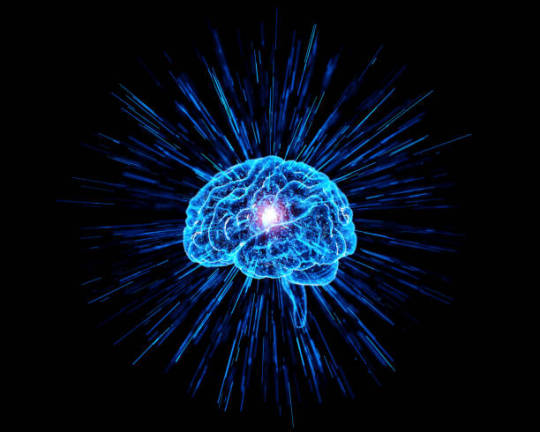Don't wanna be here? Send us removal request.
Text
Neuromatch and the Future of Human-Machine Collaboration
The relationship between humans and machines has evolved significantly over the years, with advancements in artificial intelligence (AI) and robotics paving the way for more integrated and collaborative interactions. At the forefront of this evolution is Neuromatch, a cutting-edge technology that facilitates seamless communication between the human brain and machines. This article explores how Neuromatch is shaping the future of human-machine collaboration, offering new possibilities in various industries and raising important ethical questions.

What is Human-Machine Collaboration?
Human-machine collaboration refers to the cooperative interaction between humans and machines, where both parties contribute to achieving a common goal. Unlike traditional automation, where machines perform tasks independently, human-machine collaboration involves continuous communication and coordination between humans and machines. This collaboration can take many forms, from robots working alongside humans in manufacturing to AI systems assisting doctors in diagnosing diseases.
Neuromatch represents a significant advancement in this field by enabling a more intuitive and responsive connection between humans and machines. By directly interfacing with the brain, Neuromatch allows for real-time communication and control, making the collaboration more natural and efficient.
How Neuromatch Facilitates Seamless Integration
The key to successful human-machine collaboration is seamless integration, where the machine’s actions align closely with the human’s intentions. Neuromatch achieves this by interpreting brain signals and translating them into commands that the machine can understand and execute. This allows for a more fluid interaction, where the machine can respond instantly to the user’s thoughts and actions.
For example, in a manufacturing setting, a worker could use Neuromatch to control a robotic arm with their thoughts, allowing for more precise and efficient operations. In healthcare, a surgeon could use Neuromatch to control surgical instruments with greater accuracy, reducing the risk of errors. The adaptability of Neuromatch also means that it can learn and improve over time, further enhancing the collaboration.
Benefits for Various Industries
The potential benefits of Neuromatch extend across multiple industries. In manufacturing, Neuromatch could lead to more efficient production processes by allowing workers to control machinery with their thoughts, reducing the need for physical controls and interfaces. This could increase productivity, reduce downtime, and improve safety by minimizing the need for manual operations.
In the healthcare sector, Neuromatch could revolutionize surgery by enabling more precise control of surgical instruments. Surgeons could perform complex procedures with greater accuracy, reducing the risk of complications and improving patient outcomes. Neuromatch could also be used in rehabilitation, helping patients regain control over their movements by creating a direct link between the brain and prosthetic devices.
The entertainment industry could also benefit from Neuromatch, particularly in the realm of virtual reality (VR). Neuromatch could provide a more immersive VR experience by allowing users to interact with the virtual environment through their thoughts, making the experience more intuitive and engaging.
Ethical Considerations in Human-Machine Collaboration
As with any technological advancement, the integration of Neuromatch into human-machine collaboration raises important ethical considerations. One of the primary concerns is privacy. Since Neuromatch involves interpreting brain signals, there is a risk that sensitive information could be accessed or misused. Ensuring that Neuromatch is secure and that users have control over their data will be crucial to addressing these concerns.
Another ethical issue is the potential for dependency. As Neuromatch becomes more integrated into daily life, there is a risk that people could become overly reliant on the technology, leading to a decline in certain skills or cognitive functions. It will be important to strike a balance between leveraging the benefits of Neuromatch and maintaining human autonomy and capability.
What the Future Holds
The future of human-machine collaboration with Neuromatch is full of possibilities. As the technology continues to evolve, we can expect to see even more innovative applications that enhance productivity, safety, and quality of life. However, realizing this potential will require careful consideration of the ethical implications and a commitment to using the technology responsibly.
In the long term, Neuromatch could pave the way for a new era of human-machine interaction, where the boundaries between the physical and digital worlds become increasingly blurred. This could lead to a more integrated and efficient society, where humans and machines work together seamlessly to achieve common goals.
Conclusion
Neuromatch is poised to play a central role in the future of human-machine collaboration, offering new opportunities for integration and efficiency across various industries. By facilitating seamless communication between the brain and machines, Neuromatch enables more intuitive and responsive interactions, paving the way for innovative applications in manufacturing, healthcare, entertainment, and beyond. However, as with any technological advancement, it is important to consider the ethical implications and ensure that Neuromatch is used responsibly to enhance human capabilities without compromising privacy or autonomy. The future of Neuromatch is bright, and its impact on human-machine collaboration is likely to be profound.
0 notes
Text
1 note
·
View note